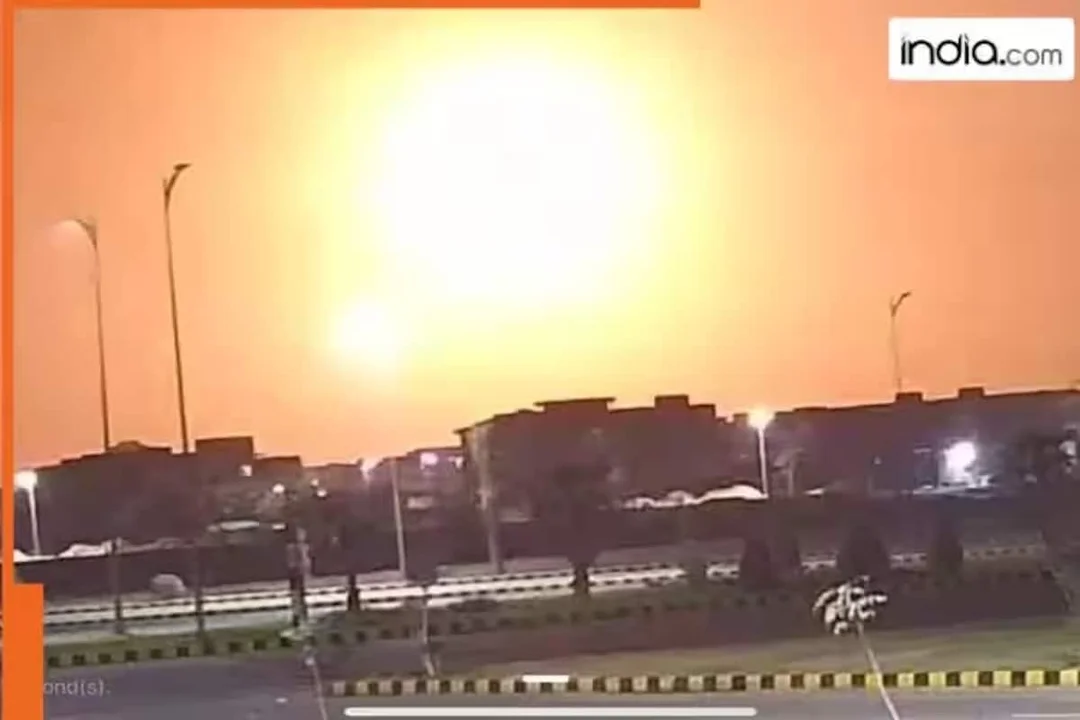
US Firm Saw Spike in Satellite Image Orders of Kashmir Before Deadly Attack: A Tech Security Flaw?
A chilling report reveals a potential security flaw in the commercial satellite imagery market. Two months before a devastating attack in Pahalgam, Kashmir, a US-based space tech company, Maxar Technologies, experienced a surge in orders for high-resolution satellite images of the area. Could these images have been used to plan the tragic event?
According to ThePrint, between February 2 and 22, 2025, Maxar received at least 12 orders for Pahalgam satellite images, double the usual number. These orders began appearing on Maxar's portal in June 2024, shortly after the company partnered with Business Systems International Pvt Ltd (BSI), a Pakistan-based geo-spatial company. This connection raises serious concerns, given BSI's ties to federal crimes in the US.

While the data doesn't definitively prove that BSI placed the orders, defense analysts and ISRO scientists emphasize the alarming coincidence. The founder of BSI, Obaidullah Syed, was convicted in the US for illegally exporting high-performance computer equipment to the Pakistan Atomic Energy Commission (PAEC), raising further red flags.
Lieutenant General AK Bhatt (retd), Director General of the Indian Space Association (ISpA), underscores the risk: "Commercial availability of high-resolution satellite images with many proliferating private space companies world over has improved ISR (intelligence, surveillance and reconnaissance) capabilities of nations and armed forces, but equally created vulnerability, if used by rogue elements and non-state actors."

The implications extend beyond Pahalgam. Maxar's portal also revealed that satellite images included militarily sensitive regions in India like Pulwama, Anantnag, and Baramulla. These high-resolution images, which can cost upwards of Rs 3 lakh, are invaluable for intelligence gathering, especially the potential for monitoring troop movements, weapon installations, and illegal activities.
A critical concern is India's dependence on foreign providers like Maxar, especially in time-sensitive situations. While India possesses its own satellite capabilities, they are limited compared to Maxar's advanced Earth observation satellites. This dependence creates a vulnerability, as Maxar sells its imagery to a wide range of clients, including potential adversaries. As reported by ThePrint, Maxar distributes imagery in Pakistan through BSI, further emphasizing the intertwined, and potentially dangerous, relationship.
The situation highlights a larger issue: the need for stricter regulations and oversight in the commercial satellite imagery industry. Can a company truly claim neutrality when selling sensitive data to both sides of a conflict? Should countries with a history of supporting terrorism have unrestricted access to high-resolution imagery that could be used for malicious purposes? ISRO scientists express concern that, as a business enterprise, Maxar prioritizes financial gain over security concerns. This is not an isolated incident. Other cases have been documented that show covert procurement activities being carried out at the behest of Pakistan’s powerful intelligence agency, the Inter-Services Intelligence (ISI).
The US suspension of Ukrainian access to Maxar's Global Enhanced GEOINT Delivery (GEGD) system in March 2025 demonstrates that the US government can and will intervene in the operations of private satellite firms. Should India use its economic influence to pressure Maxar and the US government to restrict access to sensitive data for Pakistan? This question leads to deep concerns of whether the open-access model Maxar currently is working under is a threat to the security of India, and countries with security interests in mind.
The Pahalgam incident serves as a stark reminder of the potential dangers of unchecked access to high-resolution satellite imagery. India must address this vulnerability by bolstering its own satellite capabilities, strengthening regulations, and engaging in diplomatic efforts to ensure that commercial satellite imagery is not weaponized against its interests.
What steps should be taken to prevent the misuse of commercial satellite imagery? Share your thoughts and opinions in the comments below.